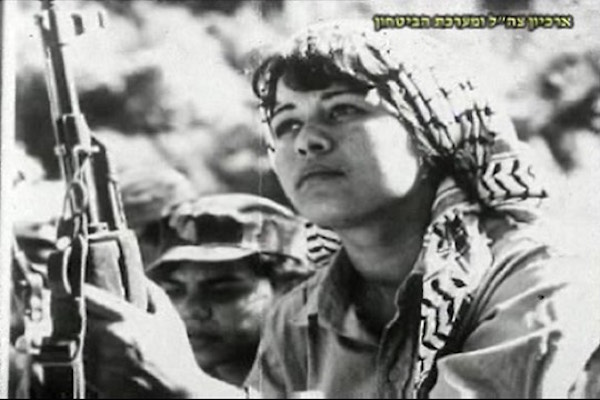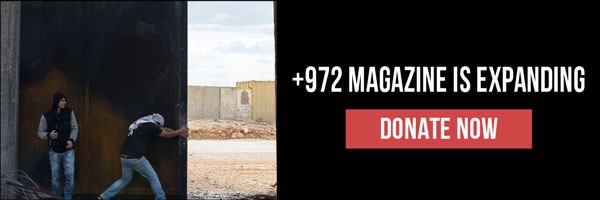‘Looted and Hidden’ digs through the archive of films taken by the Israeli army in 1982, and shines light on more property stolen by Israel: the history of Palestinian cinema.

Rare images from the archive of Palestinian films and photographs, documenting decades of Palestinian history from before 1948 and after the Nakba, are finally seeing the light of day in a new film by Rona Sela — curator, researcher of visual history and culture, and lecturer at Tel Aviv University. Nearly all of the images from the archive were confiscated when the Israeli army raided the Palestinian Liberation Organization’s offices in Beirut in 1982, taking documents and photographed material.
The materials have now been unsealed by Israel’s Military Censor and are now accessible to the public in the Israeli army’s archives.
Sela spent hundreds of hours in the military archives to make the film, which uncovers a significant amount of documentary and cultural material: photographs and films about the lives of Palestinians before and after 1948 and in the diaspora, as well as voice recordings of Palestinian artists and producers that were censored and hidden from the public. This is an invaluable collection, which Sela’s film makes accessible in order to reveal another chapter in the story of the denial and suppression of Palestinian history.
Sela smartly chose to base her film on the rare images themselves. She builds the story of the film as a correspondence between herself and a number of Palestinians, and even an Israeli soldier who served in Beirut. The relatively short film is moving: it is hard not to wonder how these images would have influenced the development of Palestinian cinema had they not been stolen and made inaccessible to Palestinian producers.
Films by Palestinians consistently make waves and win prizes internationally, against all the odds and despite Israel’s cultural warfare against Palestinian artists. It is not a stretch to say that the potential of Palestinian cinema could have been even greater had parts of its history not been hidden from the eyes of the world.
Similar to the destruction of Palestinian urbanization in 1948, the theft of Palestinian visual culture is another attempt by Israel to control the historical narrative and erase Palestinian history. Palestinian urbanization was halted and all of the most important Palestinian cities—Jaffa, Haifa, Lod, and Ramle—were emptied of nearly all of their residents to make possible the Zionist lies about “a land without a people for a people without a land” and to weaken Palestinian resistance as much as possible.
Sela’s film succeeds at showing that Palestinian cinema never ceased to innovate, and that Palestinian producers were never afraid to document and tell their own stories, as well as stories of resistance to the occupation, in cinematic language that fit the period and spoke to the world.
Even more than the film’s cultural significance, its documentation of Palestine as a developed Arab society is likely to greatly interest the wider public. In this sense, Sela’s film is a politically brave, activist production. Sela has spent the past 20 years investigating and documenting Palestinian visual culture in her books. Now, she is sharing her important findings as a documentary film that will touch the heart of every Palestinian and should cause every Israeli to feel a sense of shame.
“In the past, I researched Zionist propaganda from before the establishment of the state of Israel,” Sela said, explaining what motivated her to make the film. “One of the central motifs that reappeared again and again was the image of the Jew who arrives to a desolate area, as if the land had waited for the Jew to arrive and make it bloom.”
“This led me to research the documentation of Palestinian history,” Sela continued. “I searched through materials here and abroad to reveal to an Israeli audience that Palestine existed here before 1948.”
What is striking in Sela’s work over the years, and specifically in this film, is the central emphasis on visual elements. As a researcher of visual cultural, Sela demonstrates that she “understands the importance of visual images in the building of consciousness and national identity, and the importance of culture and history in every society.”
Sela’s film provides decisive proof that Israel has always used any means possible to erase visual documentation of Palestinian history. It exposes Israel’s theft of the archive in 1982, and reveals, for the whole world to see, another hidden chapter of Palestinian history.
“Looted and Hidden” was shown as part Zochrot’s 48mm Film Festival: From Nakba to Return.
This article was first published in Hebrew on Local Call. Read it here.


